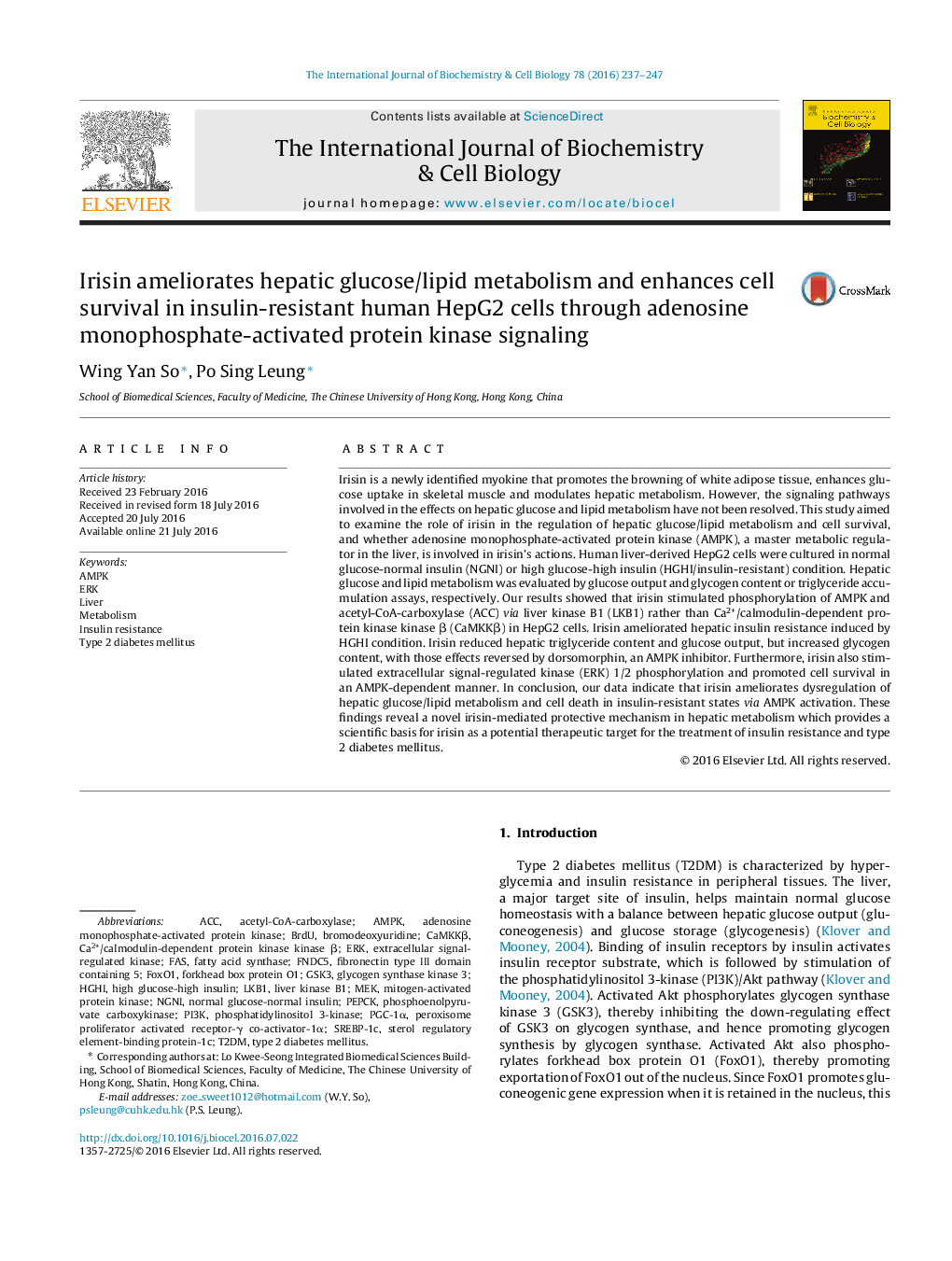| Article ID | Journal | Published Year | Pages | File Type |
|---|---|---|---|---|
| 1983309 | The International Journal of Biochemistry & Cell Biology | 2016 | 11 Pages |
•Irisin activates LKB1/AMPK signaling pathway in HepG2 cells.•Irisin ameliorates derangement of lipid and glucose metabolism via AMPK activation.•Irisin alleviates hepatic insulin resistance via AMPK activation.•Irisin enhances HepG2 cell survival through AMPK/ERK pathway.
Irisin is a newly identified myokine that promotes the browning of white adipose tissue, enhances glucose uptake in skeletal muscle and modulates hepatic metabolism. However, the signaling pathways involved in the effects on hepatic glucose and lipid metabolism have not been resolved. This study aimed to examine the role of irisin in the regulation of hepatic glucose/lipid metabolism and cell survival, and whether adenosine monophosphate-activated protein kinase (AMPK), a master metabolic regulator in the liver, is involved in irisin’s actions. Human liver-derived HepG2 cells were cultured in normal glucose-normal insulin (NGNI) or high glucose-high insulin (HGHI/insulin-resistant) condition. Hepatic glucose and lipid metabolism was evaluated by glucose output and glycogen content or triglyceride accumulation assays, respectively. Our results showed that irisin stimulated phosphorylation of AMPK and acetyl-CoA-carboxylase (ACC) via liver kinase B1 (LKB1) rather than Ca2+/calmodulin-dependent protein kinase kinase β (CaMKKβ) in HepG2 cells. Irisin ameliorated hepatic insulin resistance induced by HGHI condition. Irisin reduced hepatic triglyceride content and glucose output, but increased glycogen content, with those effects reversed by dorsomorphin, an AMPK inhibitor. Furthermore, irisin also stimulated extracellular signal-regulated kinase (ERK) 1/2 phosphorylation and promoted cell survival in an AMPK-dependent manner. In conclusion, our data indicate that irisin ameliorates dysregulation of hepatic glucose/lipid metabolism and cell death in insulin-resistant states via AMPK activation. These findings reveal a novel irisin-mediated protective mechanism in hepatic metabolism which provides a scientific basis for irisin as a potential therapeutic target for the treatment of insulin resistance and type 2 diabetes mellitus.
